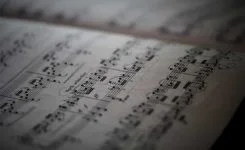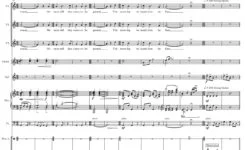arranging, Jazz piano, Music, Music Theory, Tutorials
jazz-piano-guide-to-intervals
Naming Intervals:
Informal Names
There is a traditional, or “formal” method of naming intervals favoured by classical musicians and an “informal” method, which Jazz musicians tend to use, you should know both methods.
The informal approach refers to the “natural” intervals in the major scale as 1 to 8 (as in fig1 above). For the remaining intervals we use either a “b” (flat) or “#” (sharp) to describe the accidentals.
So, C to D would be a 2nd whereas C to Db would be “flat 2” or “flattened 2nd”.
Formal Names
“Major 2nd”
A Major 2nd is the 2nd note in a major scale and is 2 semi-tones (half-steps) away from the “root” (the starting note).
“Major 3rd”
A Major 3rd is the 3rd note of the major scale and is 4 semi-tones away from the “root”.
“Perfect 4th”
A Perfect 4th is the 4th note of the major scale (you get the idea!) and is 5 semi-tones away from the “root”.
“Perfect 5th”
A Perfect 5th is the 5th note of the major scale and is 7 semi-tones away from the “root”.
“Major 6th”
A Major 6th is the 6th note of the major scale and is 9 semi-tones away from the “root”.
“Major 7th”
A Major 7th is the 7th note of the major scale and is 11 semi-tones away from the “root”.”.
PRIMARY and SECONDARY Intervals
PRIMARY intervals (4, 5, 8)
“Perfect”
Perfect 4th, 5th and Octave.
If they occur in the major scale these intervals are called “PERFECT” (eg perfect 4th)
“Augmented”
They can also be raised 1 half-step and are called AUGMENTED (or sharpened)
(augmented 4th or sharp 4)
“Diminished”
They can be lowered 1 half-step/semi-tone and called DIMINISHED (or flattened).
(diminished 4th or flat 4)
SECONDARY intervals 2, 3, 6, 7
“Major”
Intervals 2, 3, 6 and 7 that occur in the Major scale are called MAJOR.
“Minor”
If these intervals are flattened, they are called MINOR.




